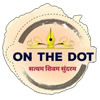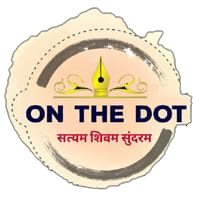 “Everything looks clear if your eyes are clear. But if there’s fog in your vision, everything appears foggy.” This concept is illustrated in logic with the idea of ‘dwi-chandrabodh’ (seeing two moons when there is only one), where the moon appears doubled due to a defect in vision. Similarly, someone with jaundice sees the world in yellow tones. How we perceive the world directly influences how we experience it. Life’s most significant obstacle is a misaligned perspective, and the key to life’s success lies in changing our viewpoint. The popular saying goes, “As is your vision, so is your world.”
“Everything looks clear if your eyes are clear. But if there’s fog in your vision, everything appears foggy.” This concept is illustrated in logic with the idea of ‘dwi-chandrabodh’ (seeing two moons when there is only one), where the moon appears doubled due to a defect in vision. Similarly, someone with jaundice sees the world in yellow tones. How we perceive the world directly influences how we experience it. Life’s most significant obstacle is a misaligned perspective, and the key to life’s success lies in changing our viewpoint. The popular saying goes, “As is your vision, so is your world.”
First, let’s talk about changing your perspective, not the world. If your perspective changes, the world will automatically transform. There’s no need to worry about changing the world—just change the way you see it. The biggest challenge, however, is changing that perspective. When we change our vision through meditation and self-awareness, a lot can happen. The more I meditate on this, the more I believe that once someone experiences the truth, their world changes. Without this experience, they can make countless cries for change, but nothing will change.
The most critical question is witnessing the truth. Changing perspective means experiencing the truth.
The First Step to Changing Perspective: Look Inward
The first step to changing your perspective is to look at yourself. Most people fail to do this. They look at everything else, but rarely at themselves. This is a profound problem. It’s like counting the camels, but forgetting to count the one you are riding. People look at death and acknowledge it happening to others, but they don’t truly believe that they will die themselves. If they truly realized the certainty of death, many wrong decisions might never be made. While they may intellectually accept death, they don’t experience it deeply, which leads them to make mistakes.
People often perceive themselves as pure and perfect, but they might not see others in the same way. I remember once meeting someone who, despite his poor understanding, considered himself very knowledgeable. When asked about the difference between a clock tower’s clock and a wristwatch, he replied, “The bigger clock will take longer to complete its cycle while the smaller one will take less time.” He believed that he was far smarter than anyone else, including his manager or boss. The problem? He was quick to point out others’ flaws but was blind to his own shortcomings. This is the adverse effect of a misguided perspective.
The Secret to Success: Changing Your Perspective
The first rule of success in life is to change your perspective. The second step is to recognize when this shift has happened. Our personality is divided into two parts: external and internal. We tend to focus on the external—looking outward for solutions, strength, and knowledge. Changing perspective means shifting the focus inward, seeking power, knowledge, and happiness from within. Once we begin this inner search, we awaken a higher level of consciousness and awareness.
External knowledge, derived from our senses, is limited. True wisdom, or pragya, is an internal realization. It cannot be acquired through books alone; many uneducated people may be deeply wise, while highly educated individuals can be quite foolish. Pragya is a form of inner wisdom, a revelation that comes from within.
The True Source of Power: It’s Inside You
We often search for strength externally—through exercise, medicine, or external sources of support. However, true strength comes from within. If our internal vitality, or prana shakti, is strong, the external sources can be beneficial. Without this internal energy, no pill or supplement will help. Our belief must shift to the understanding that the true source of power, wisdom, and happiness lies within us.
Conclusion: The Journey of Self-Discovery
To transform your life, you must first transform the way you see yourself and the world. True change begins from within, and when you realize your inner potential, everything around you begins to change.




